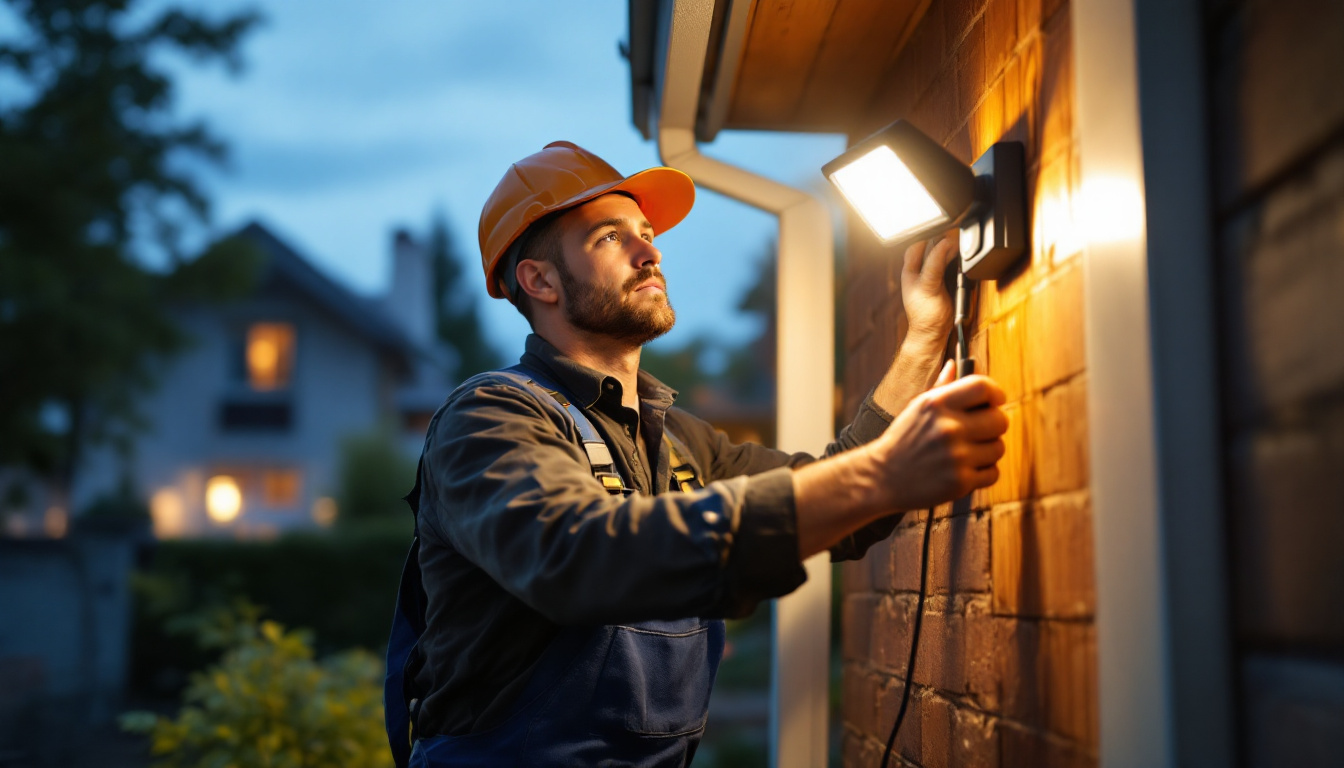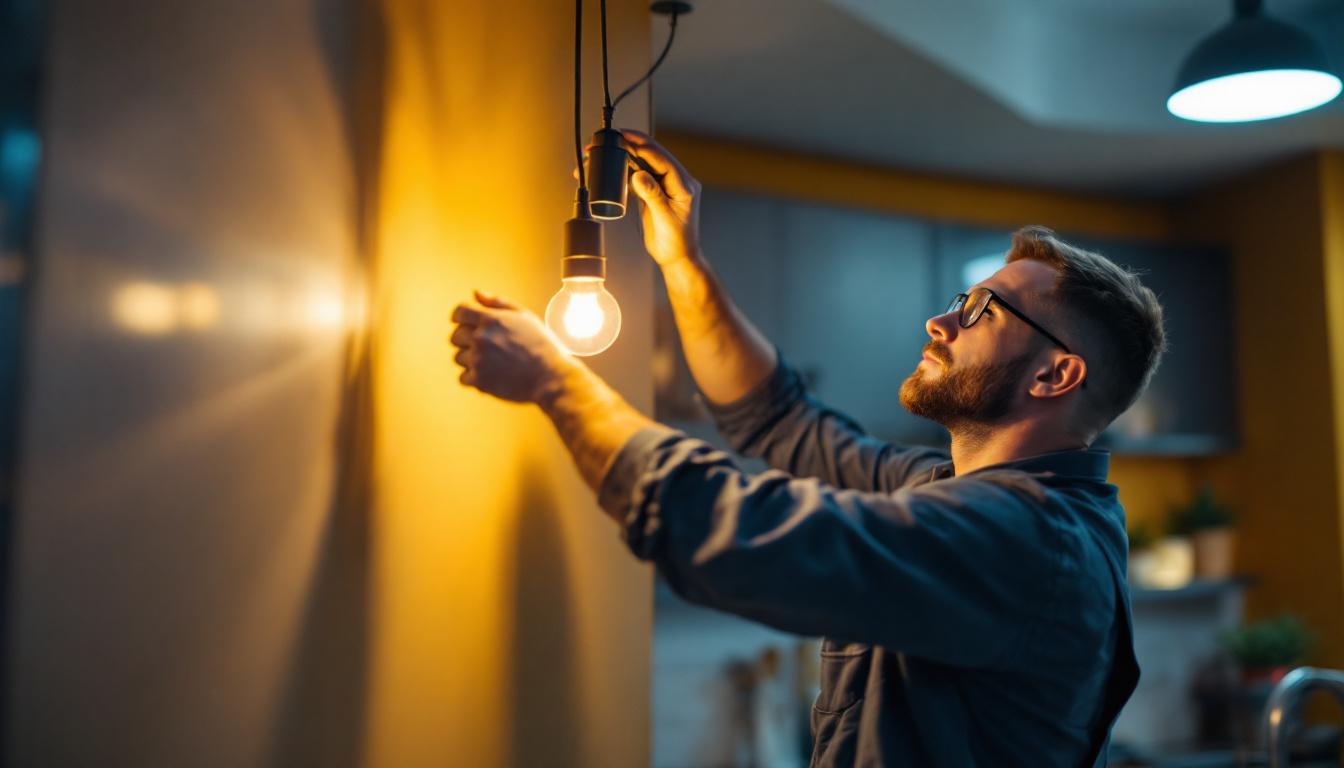
In the realm of outdoor lighting, flood light motion sensors have emerged as a vital component for both residential and commercial applications. They not only enhance security but also contribute to energy efficiency. This guide aims to provide lighting contractors with essential insights into flood light motion sensors, their benefits, installation tips, and best practices.
Flood light motion sensors are devices that detect movement in a designated area and activate lighting accordingly. These sensors are typically used in outdoor settings, where they can illuminate pathways, driveways, yards, and commercial spaces. The integration of motion sensors with flood lights offers a practical solution for enhancing safety and deterring potential intruders. By providing instant illumination in response to movement, these systems not only improve visibility but also create a sense of security for homeowners and businesses alike.
Moreover, the presence of flood lights equipped with motion sensors can significantly reduce the likelihood of accidents during nighttime hours. For instance, well-lit pathways and entrances can help prevent trips and falls, while also making it easier for guests and family members to navigate outdoor spaces after dark. As a result, many homeowners are increasingly turning to these technologies not just for security, but also for the overall enhancement of their outdoor living environments.
Motion sensors operate using various technologies, including passive infrared (PIR), microwave, and dual technology. PIR sensors are the most common, detecting changes in infrared radiation caused by moving objects, such as people or animals. Microwave sensors emit microwave signals and measure the reflection off moving objects, while dual technology combines both PIR and microwave for increased reliability. This combination allows for a broader detection range and minimizes the chances of missing movement in complex environments.
These sensors can be programmed to activate the flood light for a predetermined duration, ensuring that the area remains illuminated only when necessary. This feature not only conserves energy but also prolongs the lifespan of the lighting fixtures. Additionally, many modern motion sensors come equipped with adjustable sensitivity settings, allowing users to fine-tune how responsive the light is to movement. This is particularly useful in areas with frequent animal activity, where overly sensitive sensors might lead to unnecessary activations.
There are several types of flood light motion sensors available, each designed to cater to different needs and environments. Understanding these types can help contractors select the most appropriate options for their projects. The choice of sensor can greatly influence the effectiveness of the lighting system, ensuring that it meets the specific requirements of the area it serves.
In addition to these types, some flood light motion sensors come with advanced features such as integrated cameras or smart home connectivity. These innovations allow users to monitor their properties remotely, receive alerts on their smartphones, and even view live footage of activity in real-time. As technology continues to evolve, the capabilities of flood light motion sensors are becoming increasingly sophisticated, providing users with greater control and peace of mind regarding their security needs.
Incorporating flood light motion sensors into lighting designs brings numerous advantages. For contractors, understanding these benefits can aid in making informed recommendations to clients.
One of the primary benefits of flood light motion sensors is their ability to enhance security. By illuminating areas when movement is detected, these lights can deter potential intruders and provide homeowners with peace of mind. The sudden activation of bright lights can startle trespassers, making them think twice before proceeding.
Flood light motion sensors contribute significantly to energy efficiency. By ensuring that lights are only on when needed, they help reduce electricity consumption. This is particularly beneficial for commercial properties where energy costs can be substantial. Clients will appreciate the long-term savings associated with reduced energy bills.
For homeowners and businesses alike, the convenience of having lights that automatically activate when someone approaches is invaluable. This feature enhances safety, especially in poorly lit areas. Whether it’s a homeowner arriving late at night or a delivery person approaching a commercial entrance, motion-activated lights provide illumination exactly when it’s needed.
Proper installation is crucial for the effective functioning of flood light motion sensors. Lighting contractors must consider several factors to ensure optimal performance and client satisfaction.
When installing flood light motion sensors, the location is paramount. Sensors should be positioned to cover the most critical areas, such as entrances, driveways, and pathways. It’s essential to assess the layout of the property and identify potential blind spots that may require additional lighting.
Additionally, the height at which the sensors are mounted can affect their detection range. Generally, mounting sensors at a height of 8 to 10 feet is recommended to maximize their effectiveness while minimizing false alarms caused by small animals.
Ensuring a reliable power supply is another critical aspect of installation. Contractors should verify that the electrical system can support the flood lights and sensors. Proper wiring techniques must be employed to prevent issues such as voltage drops, which can affect performance.
It is also advisable to use weatherproof fixtures and connectors, especially for outdoor installations, to protect against the elements and ensure longevity.
After installation, testing the sensors is essential. Contractors should walk through the coverage area to ensure that the lights activate as intended. Adjustments may be necessary to fine-tune the sensitivity and duration settings of the motion sensors. This step is crucial for minimizing false alarms while ensuring adequate coverage.
To maximize the effectiveness of flood light motion sensors, contractors should adhere to best practices during both installation and maintenance.
Regular maintenance is vital for ensuring that flood light motion sensors function optimally over time. Contractors should recommend periodic checks to clients, which may include cleaning the sensor lenses, checking for obstructions, and testing the functionality of the lights. Dust, dirt, and debris can hinder the sensor’s ability to detect movement, so keeping these areas clean is essential.
Educating clients on how to use and adjust their flood light motion sensors can lead to improved satisfaction and performance. Providing guidance on sensitivity settings, activation duration, and troubleshooting common issues empowers clients to make the most of their lighting systems.
Additionally, informing clients about the importance of positioning and the potential for false alarms can help set realistic expectations.
Investing in high-quality flood light motion sensors is crucial for long-term performance and reliability. Contractors should research and recommend reputable brands known for durability and effectiveness. Quality products often come with warranties, providing clients with added peace of mind.
While flood light motion sensors offer numerous benefits, contractors may encounter challenges during installation and operation. Understanding these challenges and their solutions can enhance the overall experience for both contractors and clients.
False alarms can be a significant issue with motion sensors, often caused by pets, wind, or passing vehicles. To mitigate this, contractors can recommend sensors with adjustable sensitivity settings, allowing clients to tailor the detection range to their specific environment. Additionally, positioning sensors away from high-traffic areas can help reduce false triggers.
In some cases, clients may find that the detection range of their flood light motion sensors is insufficient. This can be addressed by selecting sensors with a wider coverage area or by strategically placing multiple sensors to ensure comprehensive coverage. Contractors should assess the property layout and recommend solutions that best meet the client’s needs.
Environmental factors such as rain, snow, or extreme temperatures can affect the performance of motion sensors. Contractors should advise clients on the importance of choosing weather-resistant products and may suggest installing heaters for sensors in colder climates to prevent ice buildup.
As technology continues to evolve, flood light motion sensors are becoming more advanced, offering exciting possibilities for contractors and clients alike.
Many modern flood light motion sensors can now integrate with smart home systems, allowing users to control their lighting remotely via smartphones or tablets. This integration enhances convenience and provides users with greater control over their outdoor lighting.
Emerging technologies are improving the accuracy and reliability of motion sensors. For instance, some sensors now utilize artificial intelligence to distinguish between different types of movement, significantly reducing false alarms. This advancement can lead to more efficient lighting systems and increased user satisfaction.
With a growing emphasis on sustainability, many manufacturers are developing eco-friendly flood light motion sensors that utilize energy-efficient LED technology. These products not only consume less energy but also have a longer lifespan, aligning with the increasing demand for sustainable solutions in the lighting industry.
Flood light motion sensors are an essential component of modern outdoor lighting solutions, providing security, convenience, and energy efficiency. For lighting contractors, understanding the intricacies of these devices—from installation to maintenance—can enhance service offerings and client satisfaction. By staying informed about the latest trends and best practices, contractors can position themselves as trusted experts in the field, ready to meet the evolving needs of their clients.
Ready to elevate your lighting projects with the best in flood light motion sensors? At LumenWholesale, we provide lighting contractors like you with the highest quality, spec-grade lighting products at prices that can’t be beaten. Say goodbye to local distributor markups and hello to our extensive selection that meets rigorous industry standards. With free shipping on bulk orders, you can trust that you’re getting premium lighting solutions at the best value, with no hidden fees. Enhance your service offerings with the reliability, performance, and affordability of LumenWholesale. Explore our wholesale lighting options now and bring superior lighting to every project.

Discover the future of sustainable lighting with our comprehensive guide on solar tent lamps tailored for lighting contractors.

Discover essential tools and technologies that every lighting contractor needs to enhance efficiency and precision in their projects.

Discover the secrets of light fixture tubing with insights from expert lighting contractors.

Discover how standard ballast can revolutionize your lighting projects.